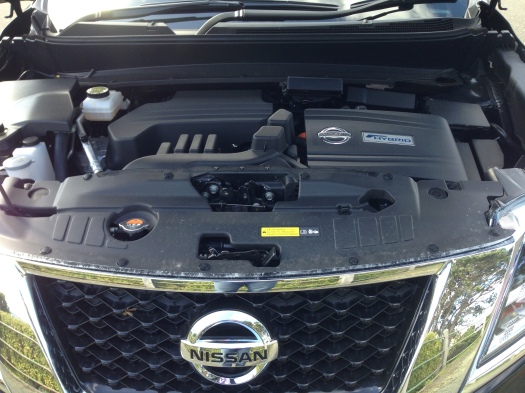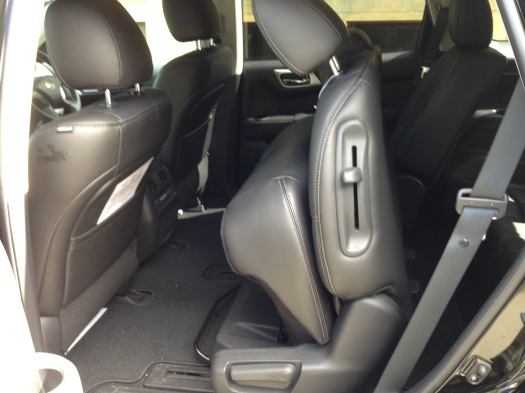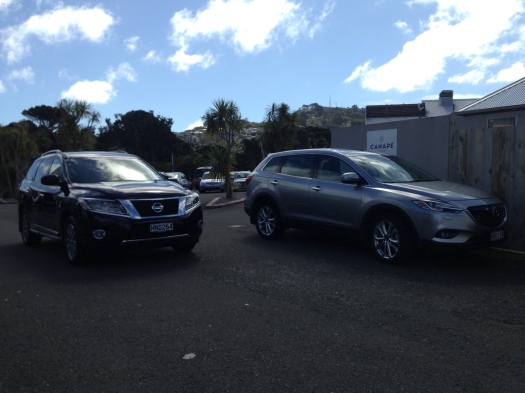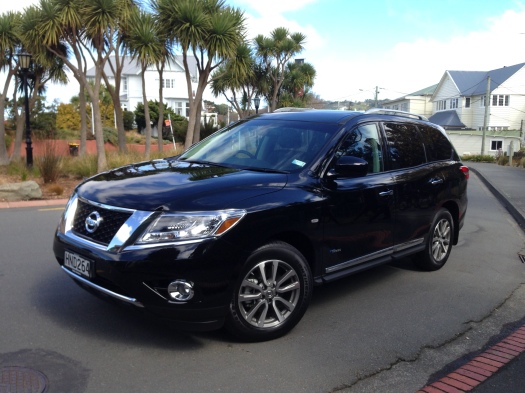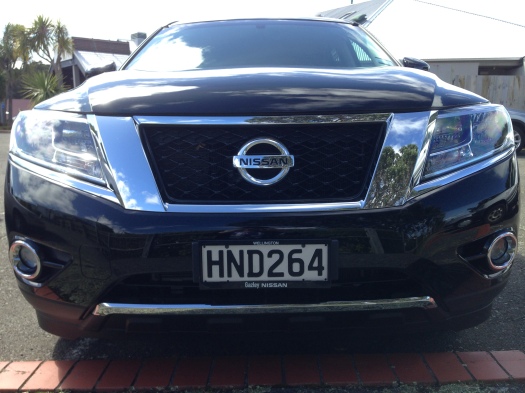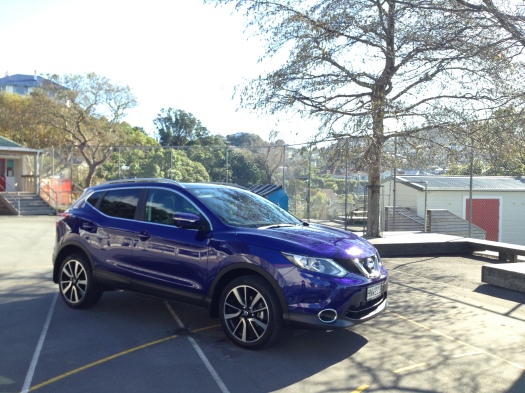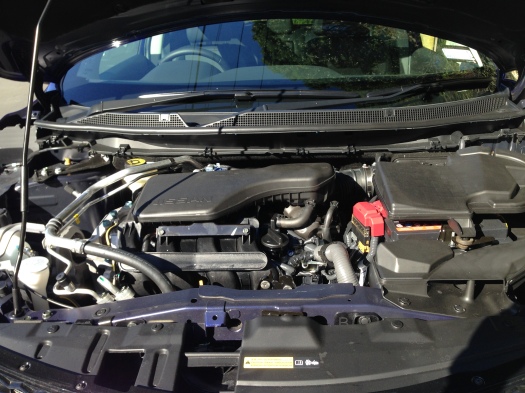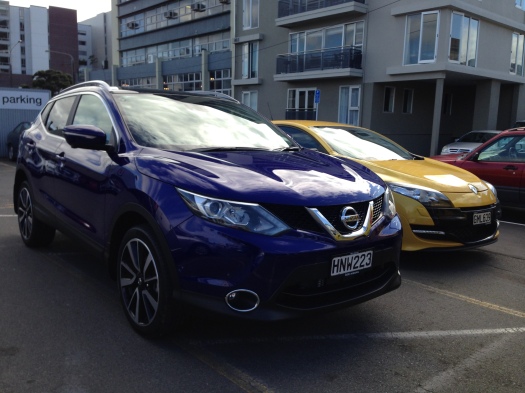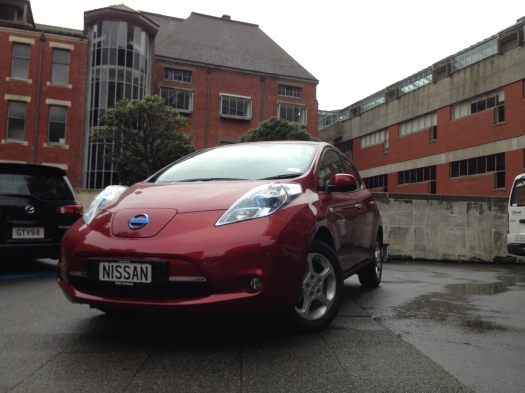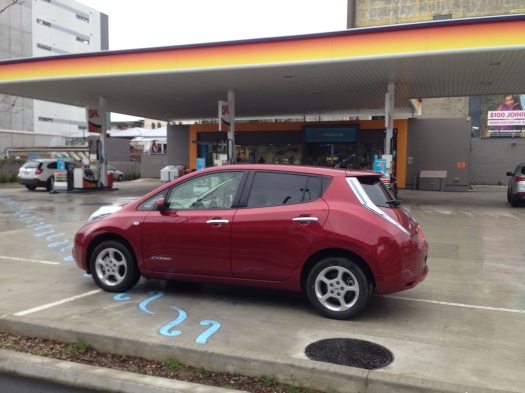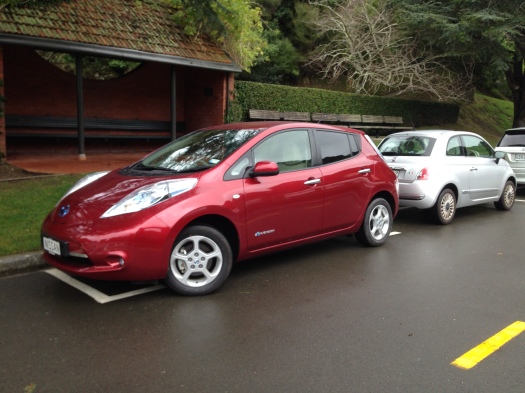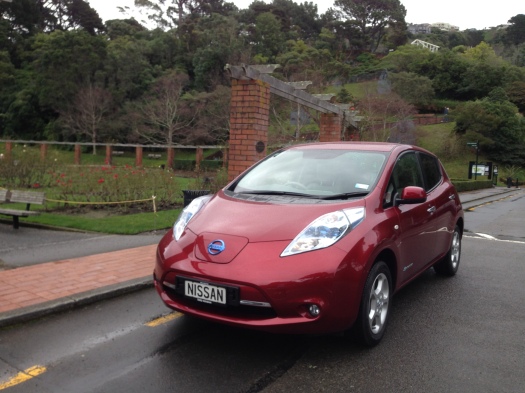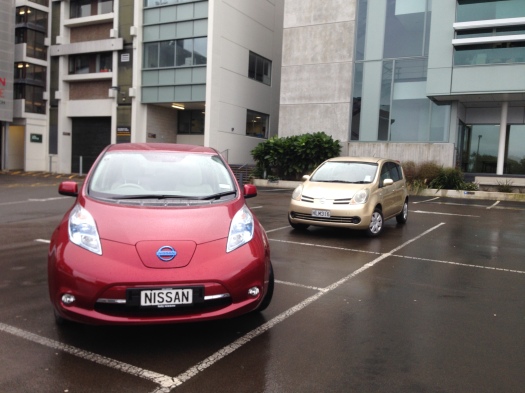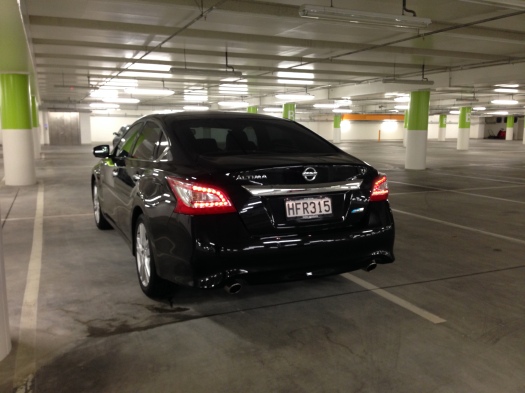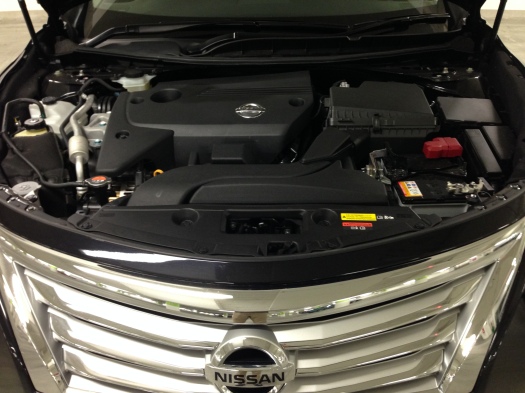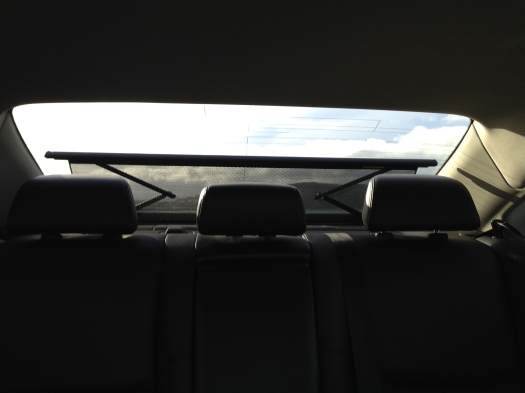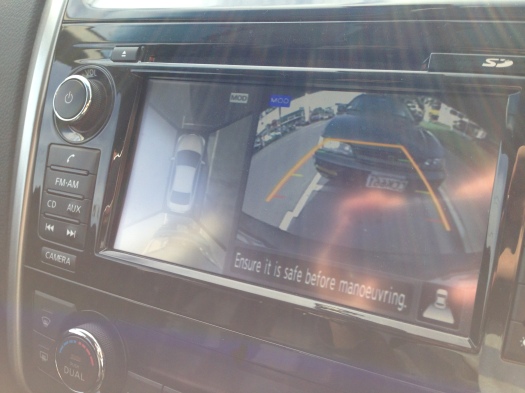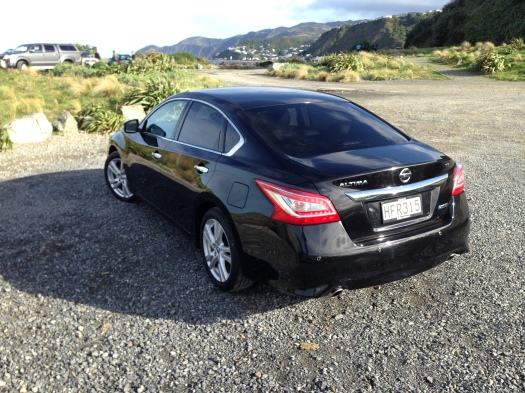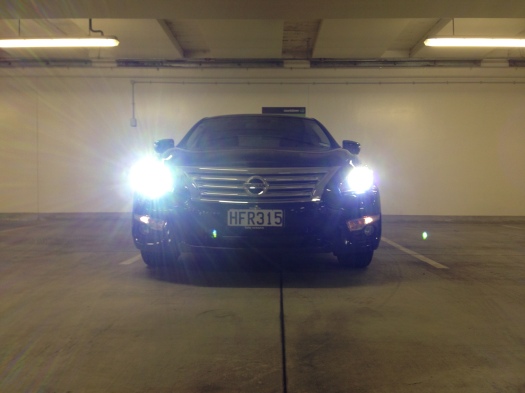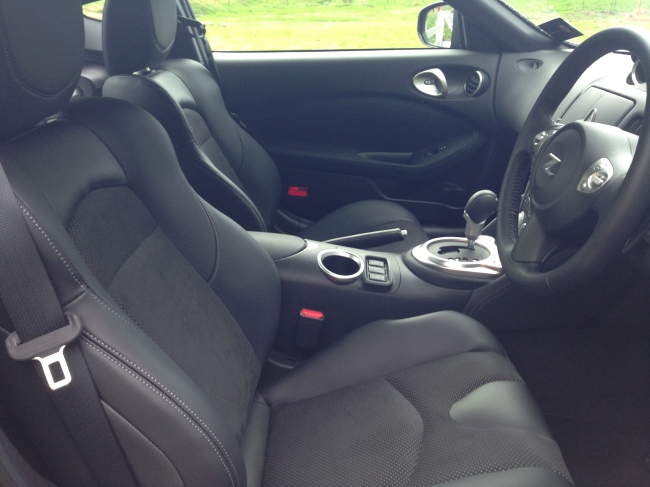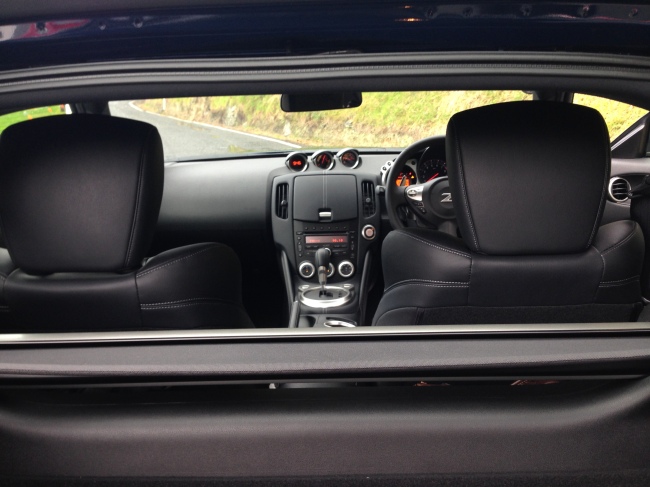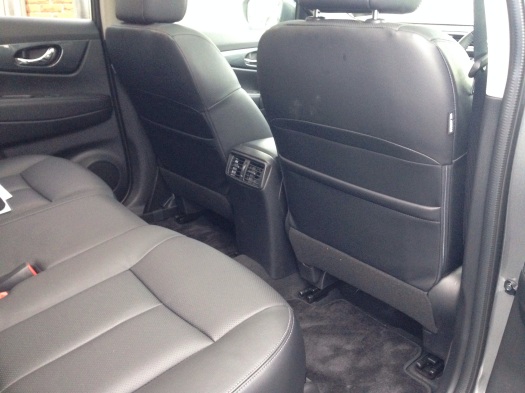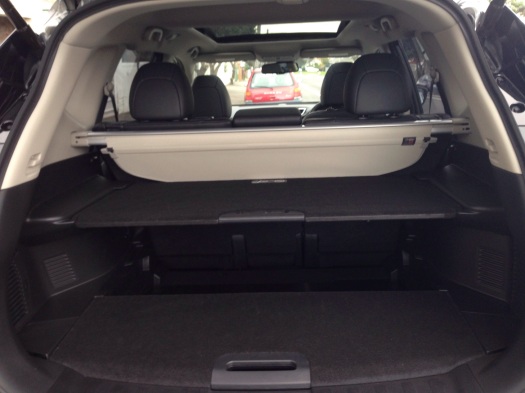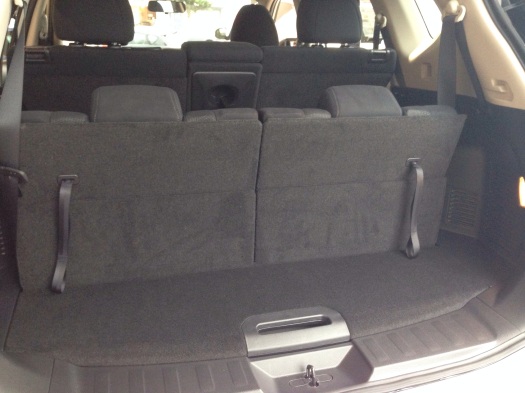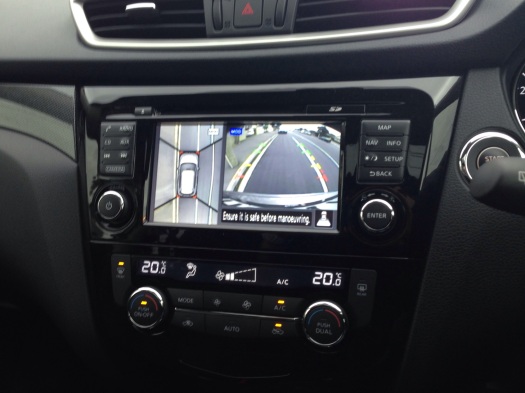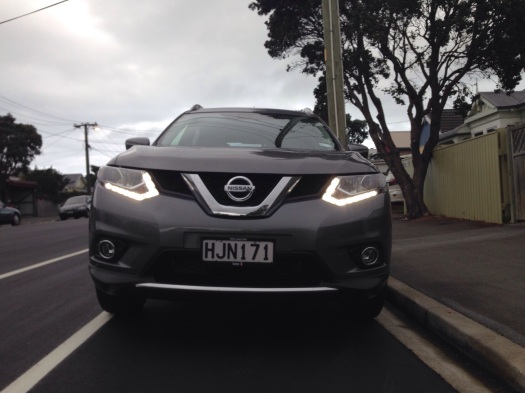2014 Nissan Pathfinder Hybrid review
I wouldn’t consider myself the most suitable person to live in the country. I’m not very outdoorsy nor am I particularly good with animals. There’s something about me that freaks animals out. For example, my friend’s cats took around a couple of months to warm to me but even then they approach me like they approach water. I also never properly learned how to use a wheelbarrow until very late in my teenage years which is somewhat embarrassing. Nonetheless I loved growing up in Canterbury, the heart of rural New Zealand. It was such a beautiful place and was a feast for your senses. The views were breathtaking, the smells were always interesting, and the noises were either sheep baaing or a knife-like silence cutting through the crisp air. It was fantastic in every sense other than the cars that were around. Or rather lack of it. Yes, I am grateful because it meant I was able to enjoy the outdoors without having to worry of getting run over by a crazed lunatic in an out of control Holden, but it didn’t quench my thirst for exotic supercars. On the odd occasion you’d see, hear a Lamborghini or Maserati out for a Sunday drive but that was about it.

Staring at all the car posters I had on my bedroom wall, I longed for a slice of the city life. But alas it never happened. Instead of being surrounded by Mercedes-Benzes and Porsches in suburban NZ I was surrounded by Toyota Hiluxes and Nissan Pathfinders. Nothing wrong with that, it just meant I came to appreciate the capabilities of these vehicles more. I remember one winter we foolishly decided to take the Alfa out and before we got to the end of the driveway it had become stuck. Our neighbour’s Hilux came to the rescue and towed it out. To me the Hilux and the Navara/Pathfinder is as much a part of the NZ landscape as Mt. Hutt and sheep. So you’d imagine my surprise when Nissan launched the all-new fourth generation Pathfinder which seems about as rural as, well as me.
To understand Nissan’s thinking you have to look at the market. People aren’t buying big 4x4s anymore to go off-roading. They’re buying them to take their children to school and to go shopping in. There’s no need for locking differentials and the ability to wade through 800mm of water. Sure there are still a small number of people who want a car that can do all that but that’s not where the money is. Which is why Nissan’s once rough and tough 4×4 range have grown up and become more refined. The new X-Trail has got rid of its boxy design in favour of a more contemporary sporty look while the Patrol is about as luxurious as bathing in honey. Don’t let that fool you though, the new Patrol is still one capable off-roader. It’s just added more creature comforts.
Which brings me on to the new Pathfinder. Launched in the New Zealand market in 2013, the Hybrid model joined the range in August 2014 and is the eco-friendly range topper (no diesel available for this Pathfinder). This is the fourth generation Pathfinder and is the second time the nameplate has adopted a car-like monocoque chassis. The first and third generations had a body-on-chassis set up and were similar to the Navaras of their time. This time though the Pathfinder is less Navara and more Infiniti as this actually shares the same platform as the Infiniti JX and Nissan Murano – two SUVs aimed at the premium end of the market. The Pathfinder’s new found premiumness can be seen straight away.
Looking at this new Pathfinder next to the old you’d be hard pressed to make a family connection. Where the old one was boxy and rugged, this has curves and chrome on it like there’s no tomorrow. Actually while I’ve mentioned chrome have you ever seen a grille quite as prominent as the one on the Pathfinder? There’s a very good reason for this; it’s because it’s not actually made in Japan. While it may have a Nissan badge, which is about as Japanese as a sumo wrestler eating ramen at a cosplay convention, the Pathfinder is actually made in the United States of America – Tennessee to be exact. Which means this is a bit like the motoring equivalent of a Japanese anime with English dubbing. It still has all the usual Japanese qualities one would expect from a Nissan, only it’s been garnished with American barbecue sauce. And that’s why the grille is about as bling as Las Vegas. That analogy could work with Tokyo too.
Anyway, I know looks are subjective so don’t take my word for it. Make your mind up on your own but I personally don’t think the Pathfinder is as attractive as Nissan’s other crossovers and SUVs. Go to a Nissan showroom today and you’ll notice the Qashqai and X-Trail have sleeker, and to my eyes, prettier designs. The Patrol takes presence to a whole new level simply with its sheer size. The Pathfinder sit awkwardly between the two. Which I think was a mistake. Nissan should’ve picked one side, sleek and sporty or big and chunky, and stuck with it. From the front and side the Pathfinder is perfectly acceptable. As I’ve said the big chrome grille and chunky front gives it good presence while from the side those curves on the waistline elegantly disguise the car’s bulk. The 18-inch wheels do look small though, giving it the proportions of a supermarket trolley. Perhaps bigger, flasher 20-inch rims would make it look more “gangsta” and “bling”. If that’s your sort of thing. But the rear, oh dear. If I were to use one word to describe it it’d be ‘American’. It’s not bad or ugly by any means. It just appears as if the designers had given up by the time they got round to the back. Probably to go get a burger or something. It is a a lot of car to design after all.
At a smidgen over 5m long and very nearly 2m wide, the Pathfinder is right up there with the Range Rover in terms of size. Some cars are good at hiding their size like Porsche Macan which somehow shrinks around you and feels like a smaller hot hatch. Other cars feel their size like the Fiat 500. That thing feels very small and nippy, one of the many reasons why I love it. The Pathfinder definitely feels its size too. As you sit in the driver’s seat you get a great view out the front, side and, rear. But as you look forwards, and especially if you look back, there’s no escaping how much car there is between you and everything else outside. It’s a wonderful feeling. You feel like you’re on your own planet separate from everyone else. If you wanted to, you could barge straight through traffic and not feel a bump. Best fit bull bars if you want to do that though. Not that you should because that’s very likely to be illegal and anti-social. But its big for the same reason it has a very shiny nose – it is American after all. But that’s not necessarily a bad thing.
For a start because of its sheer bulk you get 7 proper seats. We ran a first-generation Ford Territory a few years ago and I dreaded every time we had to carry more than 5 people in it because I knew I had to sit in the third row. Which was about as commodious as pickle jar. Kind of counter productive for a 7 seater car if you ask me. In the Philippines my relatives have a Toyota Fortuner which is to the Hilux what the Pathfinder used to be to the Navara. It’s a sort of Hilux SUV and even the rear seats in those weren’t much good for adults. Recently I had the unenviable experience of sitting in the third row of a new Hyundai Santa Fe and rumours of South Korean intelligence using that as a form of torture to North Korean spies seems very reasonable. But you don’t get that problem in the Pathfinder. I had adequate legroom but as the second row can slide forwards and back I could have even more room. It’s headroom that’s usually the killer for cars like these but thanks to the tall shape you don’t have to be Anne Boleyn to sit in the back. Even with a panoramic roof!
The rest of the interior is just as surprising. Let’s spice it up a bit for this review and work our way forwards rather than back. The boot is huge with the third row folded into the floor. The seats do fold flat so it essentially extends the boot space from 453L to 1200L. Fold the second row down too and you get a mammoth 2259L of cargo space. Think of all the possibilities with space like that! You could literally solve NZ’s housing crisis with this car. Ah, the second row of seats are very clever indeed. They slide backwards and forwards like seats you get in vans. That means you could have them pushed back to make the legroom ridiculously big or slide them forwards to give third row passengers more space or to make the boot even bigger. Passengers in the second row not only get brilliant legroom, but as there’s no intrusive transmission tunnel, you get a completely flat floor too. That helps in long trips. Headroom in the second row is great too. Up front the driver and front passenger have endless choice as the seats were electrically operated. The steering column which adjusts for reach and rake was also electrically operated, a very fun and useful feature.
Styling-wise the interior mirrors the exterior quite well. There are enough swoops and curves here and there to make it interesting to look at but ultimately it looks and feels very American. The central armrest was huge. It was like something lifted straight from a Texan’s man cave or something. It was trimmed in leather but it looked like it was carved straight from the actual cow’s hide. I can assure Greenpeace that it wasn’t. That would be cruel and not very practical in the summer. Leather is a prominent feature in the cabin. The steering wheel, seats, arm rest, and gearstick are trimmed in the stuff which makes it feel properly premium. There’s the usual black piano trim on the centre console which seems to appear in every Nissan car I’ve driven. Except for the 370Z of course. Oh and I must mention the cupholders. Usually not something I’d write about unless it had a cool design or if it spoke like C-3P0. But the ones in the Pathfinder were huge. Jumbo size cupholder but bear in mind this is from America so it’s probably medium size for them. The rest of the materials used were either nice quality soft touch or just plain old decent plastics. In short, nothing in the interior felt cheap or nasty. It’s a very well sorted, good looking, and practical cabin. Except for one thing.
You see I’ve driven a few new Nissans lately and one of my favourite things is the brilliant infotainment system they have. The 7-inch screen is clear and crisp, the Around-View Camera is one of the most useful things man has ever invented, and everything is intuitive and easy to use. I’d go as far to say it’s the best infotainment system of any mainstream car. It’s a feature that was on the Leaf, Altima, Qashqai, and X-Trail. So why then does Nissan’s premium SUV have an old, clunky, and unfathomable system? Where do I start. Okay the ludicrous number of buttons. Why is was it necessary to have so many buttons on the dash?! I love technology and gadgets as much as the next person and I love pressing buttons. But I was baffled and intimated by the amount of buttons on the dash. Oh sure they were lovely to press and well damped adding more to the premium feel. but my god was it confusing. There are two levels of buttons which control the top screen. You have a rotary dial with buttons around which control the screen brightness and quick menu jumps to settings and info. Then further down the centre console are the audio controls which are tiny. And are placed directly above the climate control dials. They look identical so when I wanted to turn the volume down, the A/C would be sub-zero. I just wanted to listen to the Frozen soundtrack, not be frozen myself. Then theres’s the screen itself. It’s 7-inches but it’s not exactly high def. Everything is pixelated and slow to respond. The reversing camera has guidance lines which is nice but it’s far from being the clearest on the market. It was easier to do it the old fashioned way and look out the back window. And where’s the sat-nav?!? Or the Bluetooth audio streaming? You can get that in a $20k Chinese-made MG3 but not in a $70k SUV from the USA? Land of the free my arse! Perhaps that’s something they could address in the facelift.
Luckily driving it was less frustrating. In fact its all very straight forward. The Pathfinder Hybrid uses a 2.5-litre four cylinder supercharged petrol engine and teams it with a 15kW electric motor. The powertrain produces a combined 255bhp and 330NM of torque while returning 8.6L/100km. In comparison the V6 petrol Pathfinder develops 260bhp and 325NM of torque and returns 10.2L/100km. So that’s pretty much the same sort of performance but with a 2L/100km advantage. And in terms of where these cars spend most of their time (urban areas), the Pathfinder Hybrid makes a lot sense. The electric motor is there to help take some of the stress away from the petrol engine so for example starting the car, rather using a conventional starter motor it’s the electric motor that kicks in first. On the move the combination of the electric motor and supercharged petrol engine is seamless. You never notice them at work, it’s all behind the scenes. You get a nice surge of power too from the combination of instant torque from the electric motor and the supercharged engine. This is a car that is quite literally super-CHARGED (sorry, I’ve been wanting to use that pun for a while). You put your foot down on the accelerator and the energy information display on the instrument panel lights up giving you assurance the hybrid system is working fine. It’s surprisingly swift. No, it really is. I assumed it’d be a bit geriatric and with delayed responses but nooo, that supercharged/hybrid system really shifts well, especially as this thing weighs around 2 tonnes.
Around town, where these sorts of cars spend a large chunk of their life, the Pathfinder copes well, apart from its size obviously. The hybrid powertrain is smooth and quiet and is very well suited to the challenges of the urban jungle. Wellington is blessed/cursed with a lot of hills but the Pathfinder conquers them without much fuss. The Pathfinder Hybrid, and other Pathfinders, have Nissan’s smooth Xtronic CVT transmission and in the Pathfinder it’s one of the best matches. The CVT is always on its feet and gives the best “gear” for extracting optimum efficiency and power from the hybrid system. As the electric motor fills in the gaps of the petrol engine when the CVT changes ratios, the feeling of gliding on a magic carpet is the only thing I can think of to compare it to. It’s spooky though not as spooky it must be said as the Leaf. Couple the eerily quiet and smooth hybrid system to the Pathfinder’s ability to make you feel like you’re in a world of your own and it’s refined ride and you truly have a car that is ideal to the trials and tribulations of family life. Nissan’s switch from the utilitarian ladder chassis set up has paid off, the monocoque bodied Pathfinder ride and drives like car, albeit a big one. It just copes so well with urban surfaces, it deals with city roads as well as a headmistress deals with a troublesome pupil. But don’t think this new Pathfinder won’t be much cop off road. It still has decent 163mm ground clearance and a clever All Mode 4x4i system which allows you to switch between 2WD, Auto, and Lock modes.
So that’s the ride sorted, now handling. Hmm, well you have to take into consideration that this is a big, bulky, hybrid, family wagon and not a point and shoot sports car. The handling is a bit, American to put it nicely. The steering is light and isn’t as direct as I’d hope. Nor is there an awful lot of feedback as to what the front wheels are doing. But for shopping centre car parks and zipping through suburbia it’s fine. The brakes are responsive and have nice feel to them. The Pathfinder has regenerative braking which takes energy which would’ve been wasted and stores the energy in the battery for the next time you accelerate. It’s clever stuff. Less clever is the bodyrool, oooh this thing leans. That could be a problem if you have children prone to motion sickness but that’s why airplanes have those paper bags for you to take home. So you can use it for your Pathfinder. Actually, to be fair it’s not that bad. It’s just because there’s so much space inside the Pathfinder’s cabin unless you’ve got packed full of Americans, you’re going to have acres of room to move around in. In all truth and honesty though the Pathfinder is shaping up to be a clever choice for families looking for a usable 7-seater SUV around the $70k mark.
You always see reviews of car that say they’re a lot of car for the money. Well the Pathfinder is probably king of “a lot of car for the money”. The Pathfinder range starts from $54,990 for the 7-seater ST trim with 2WD. The ST 4WD starts at $59,990 while the Ti is $65,990. All three trims are powered by Nissan’s award-winning 3.5-litre V6 engine. A fine engine but not quite as frugal as the Hybrid which starts at $69,990 and has a 2L/100km advantage over the V6. Yes, you read the price right. If I were to say you could have a brand new efficient, 7-seater American SUV for under $70,000 you’d probably think I was mad. But that’s exactly what the Pathfinder Hybrid offers. Most of its rivals, and even in its own range, are powered by big thirst petrol V6 engines. They’re lovely engines no doubt about that and are great for towing but if you’re going to be primarily be using it to car pool to school or taking your 4/5 children to their sports events, the Pathfinder has space for 7 with a little bit extra in the boot for a dog or other dog shaped objects. The fact of the matter this all its rivals are thirsty and emit more CO2. With the Pathfinder Hybrid you can carry 7 people knowing you’re doing your bit for the environment. Not just by taking one less car off the road but also by giving up a big V6 engine. It’s well equipped though I was left wanting more. It comes with auto HID headlights (no LEDs here or daytime running lights), rear sensors (but no front sensors), leather around the interior, power and heated front seats (but not cooled), sunroof and panoramic glass roof (rear panoramic roof doesn’t open), and keyless entry and go (but no power tailgate). Luckily it does come with a high 5-star ANCAP safety rating, multiple airbags, Vehicle Dynamic Control, Electronic Brakeforce Distribution, and Tyre Pressure Monitoring. Unfortunately it doesn’t have blind spot assist or lane departure warning like you get in the Qashqai.
Rivals such as the Toyota Highlander, Ford Territory, Mazda CX-9, Hyundai Santa Fe, Kia Sorento, Holden Captiva. All these cars are decent, except for the Captiva. I drove one of those briefly and couldn’t find a single redeeming feature at all. So bar the Captiva, the Pathfinder is up against some hefty competition. I really liked the Santa Fe and in terms of driving dynamics the Territory is the benchmark. I haven’t tested a Highlander but I’m a bit adamant on those as the top-spec model is edging on $80,000 which is a lot of money for any car let alone a Toyota! As for the CX-9, well that’s been around a while now and to be brutally honest it looks a bit like a sad whale. While the Pathfinder is no beauty queen, it is the only one with decent green credentials. Okay some might point out the Territory, Santa Fe, and Sorento have diesel engines which are more efficient but the point of a diesel is range. A diesel makes sense if you cover a lot of mileage each year but around town it’s just wasteful. A hybrid makes more sense. And at least with a hybrid there’s not annoying road user charges to deal with either.
Nissan has always had a history at making good SUVs and their current line up consisting of the Juke, Qashqai, X-Trail, Pathfinder, Murano, and Patrol show that they still are today. So for a convenient, efficient, family-friendly 7 seater SUV the Pathfinder is the way to go. Blast, I just remembered the Outlander PHEV. Okay, well that’s around $65,000 anyway and isn’t as big. So if you want a convenient, efficient, family-friendly 7 seater SUV that’s bigger than an Outlander, the Pathfinder Hybrid is the way to go. It has all the advantages of the Pathfinder; so that clever and practical seating arrangement, tons of space, decent levels of equipment, and class-leading levels of refinement but with the fuel economy equivalent to a hatchback. My only issues are with the outdated infotainment system and its size isn’t really suited for the city. Which is ironic because Nissan shifted the Pathfinder from a rugged, utility vehicle for the country to a premium urban city wagon. However, because of its size it longs for the open road. Or you could get a Nissan Leaf to use for city driving if you really wanted to be eco. But at least wherever the Pathfinder goes, city or country, it’ll find cleanest path. A hybrid in every sense of the word.
Verdict: 8/10
Pros: Fuel efficiency, smooth comfortable ride, refinement, premium feel, space, 7 proper seats with clever seating arrangements, well equipped, smug feeling of saving the world in a big SUV.
Cons: Size makes a challenge in the city, outdated infotainment system, panoramic roof doesn’t open.
The Pathfinder makes a fine case for itself and for hybrids in general. A very capable way for transporting your family in comfort and relative efficiency. Finally, a 2-tonne SUV even Greenpeace can buy!











